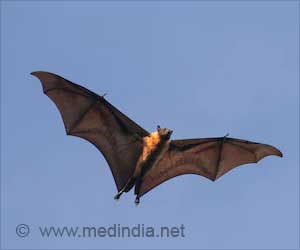Researchers have published the first microsatellite-based genetic linkage map has been published for Schistosoma mansoni,
Researchers have published the first microsatellite-based genetic linkage map has been published for Schistosoma mansoni, a blood fluke that is known to infect over 90 million people in Africa, the Middle East and the New World.
Researchers writing in BioMed Central's open access journal Genome Biology hope the map will stimulate research and open doors to new advances in combating this neglected human pathogen.S. mansoni, a blood fluke, is one of the major causes of schistosomiasis, a chronic disease, with varying symptoms depending on the organs affected. Individuals with intestinal infections develop an apparent 'potbelly'. Acute, hepatic and intestinal schistosomiasis are all commonly seen. The World Health Organization estimates that more than 200,000 deaths per year are due to schistosomiasis in sub-Saharan Africa alone, and points out that the chronic nature of the condition has a long-term disabling effect.
Charles Criscione, from Texas A&M University, College Station, USA, and a team of researchers that included Philip LoVerde from the University of Texas Health Science Center and Timothy Anderson from the Southwest Foundation for Biomedical Research in San Antonio, USA, used two adult flukes to breed 88 S. mansoni flukes. By comparing the genetic information of the offspring to the parents, the researchers are able to generate a genetic map of the chromosomes of this pathogen. According to Criscione, "Linkage mapping has been very successful for mapping the genes underlying outward traits in a number of parasitic organisms. In malaria parasites, the linkage map has resulted in the identification of major genes underlying drug resistance and host specificity. Similarly, linkage maps of the parasitic protozoans, Toxoplasma and Eimeria have resulted in mapping of factors underlying acute virulence".
The researchers hope that their map will help overcome the current lack of tools available to study S. mansoni's molecular, quantitative and population genetics, and provide a fundamental framework for tackling both applied and basic questions about S. mansoni. Criscione said, "The map has multiple applications for developmental and evolutionary biology. It will facilitate high resolution population genetic studies of S. mansoni, which will improve our understanding of transmission patterns in affected areas. The map presented expands the genetic toolkit for S. mansoni providing opportunities to understand fundamental features of blood fluke biology, and opening doors to new advances in combating this neglected human pathogen". This research was supported by the NIH.
Source-Eurekalert
RAS













